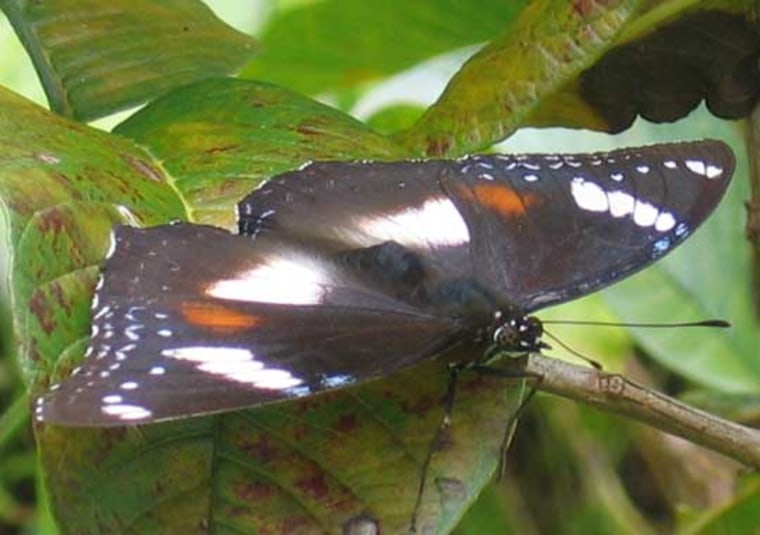Pop songs romanticize about a girl for every boy, but nature isn't quite as even-handed, according to a new study that documents one species of tropical butterfly that has a sex ratio for some populations of 20 females for every male.
In humans, modern medicine and other factors permit, on average, 97.1 males for every 100 females, but that drops to 72.1 males for every 100 females by the time individuals are 65 years of age and older, according to U.S. Census Bureau data.
The situation is much more precarious for the colorful butterfly, Hypolimnas bolina, which was the focus of the new Current Biology study. Mating becomes a challenge for both sexes.
"When the sex ratio is extreme — few males per female — females go unmated, and even when mated, (they) run low on sperm because the males transfer little," co-author Gregory Hurst told Discovery News. "Females then have to compete for males."
Hurst, a University of Liverpool professor of evolutionary biology, and his colleagues studied museum specimens of the butterfly dating back to the 1800's, as well as modern populations of the species. The specimens were housed at the Natural History Museum, London, and the Oxford University Museum of Natural History.
The uneven sex ratio is due to a deadly parasitic microbe, Wolbachia, which preys only on males.
"The infection transmits to progeny through eggs, but not sperm," he explained. "Thus, female hosts can transmit the infection onward and are useful to the bacterium and are maintained."
"Male hosts, in contrast, are a dead end for the infection," he added. "Because they are not useful, they are killed."
Evolution in action
The scientists took DNA samples from the legs of male and female butterflies to track the infection and how it changed the insect's numbers over the years. They determined some populations in South East Asia and Samoa evolved a "suppressor gene" that foiled the bacterium, permitting females to mate and produce sons per usual, leading to a 1:1 sex ratio.
Populations without this gene have become female-biased, with females producing mostly daughters. This is happening now in Tahiti, where the sex ratio for the butterfly is 20:1.
Since the changes can be documented over many butterfly generations, the study demonstrates how scientists can watch evolution in action by comparing museum specimens to contemporary populations, highlighting the value of such collections as "silent witnesses."
"Evolution, in its purest sense, is change," Hurst said. "Our past and current samples from the same place differ, thus change — evolution — has happened."
He added that in two cases, "this change is the spread of a suppressor of the bacterium." In other cases, "the change is the spread of the inherited bacterium."
John Jaenike, a University of Rochester biologist, told Discovery News that the new "study is remarkable in two respects."
"First," Jaenike said, "the authors have very cleverly used old museum specimens, which had been collected by enthusiastic entomologists, to directly estimate the prevalence of Wolbachia infection and sex ratios in populations between 75 and 140 years ago.
"Then, by comparison to present-day populations, they show that these populations are evolutionarily extraordinarily dynamic."
"These findings clearly show that evolution does not necessarily proceed at a glacial pace," he concluded. "Instead, major changes can be observed within a matter of decades."
